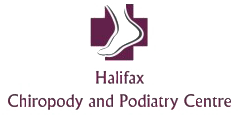As podiatrists we often have to differentiate between two or more conditions that may be causing symptoms. Often the history taking and assessments process will lead us to come to a single theory of what we believe is the cause of your heel pain. We may then request for further tests in order to confirm our diagnosis and rule out any differential diagnosis.
Haglunds Deformity
Often mistaken for bursitis or achilles tendonitis, a Haglunds Deformity is a bony bump at the back of the heel. The deformity is often found in conjunction with bursitis due to the inflammation it causes to its surrounding tissue. Footwear can play a major part in the
deformity producing painful symptoms and is often aggravated by certain types of footwear such as pumps, rigid backed shoes or dress shoes. Diagnosis of a Haglunds Deformity will need to be confirmed by an Xray.
Heel Spur
Heel spurs are often caused by straining muscles and ligaments and repeated tearing of connective tissue and fibres surrounding the heel bone. This causes the bone to develop a ‘hook like’ spur of bone to grow attached to the heel.There are 2 common types of Heel Spurs, 1 is under the foot and can be a differential diagnosis for plantar fasciitis. The other can occur at the back of the heel where the Achilles tendon is attached. Over time the strain put on the heel due to these strong structures causes the bony spur to develop. Again X-rays are the only way of confirming our ruling out a diagnosis of a Heel Spur.
Stress fracture
A Stress Fracture is a crack or sometimes multiple cracks which develop in a bone. The foot is a common place to develop stress fractures because of the weight they bear and the repetitive strain we put on our feet. The pain may not start when the initial fracture develops. Often the pain will develop and gradually get worse over a number of weeks. Stress Fractures can commonly occur with a sudden change in activity levels which the bone is not used to. A rapid increase in intensity/ volume of exercise or not enough rest between physical activities will not allow the bone to heal if damaged and the fracture can then develop and need help to heal. We are able to carry out a vibration test which will indicate the likelihood of a Stress Fracture and referral for an X-ray would then be considered based on this result.
Bone tumour
Bone cancer is rare and makes up for less than 1% of all cancers. Non-cancerous tumours are in fact a lot more common than cancerous ones. Tumours are always in the back of our mind when we come across red flags that may indicate a more serious problem in our patients. This is why history taking is such an important part of our assessment. As it is not clear what risk factors cause bone tumours, often an insight to a person’s background and medical history may indicate a risk of developing a tumour such as inherited genes passed down through families. Associated diseases with a higher risk of developing bone tumours such as Paget’s Disease, and previous exposure to large doses of radiation such as treatment for previous cancers may increase the risk of developing bone cancer in the future. Symptoms associated with bone tumours may include weakness of the bone leading to fractures, pain and swelling. Red flags that we would look out for in this instance would be an unintended weight loss and or fatigue which can indicate a more concerning problem.
